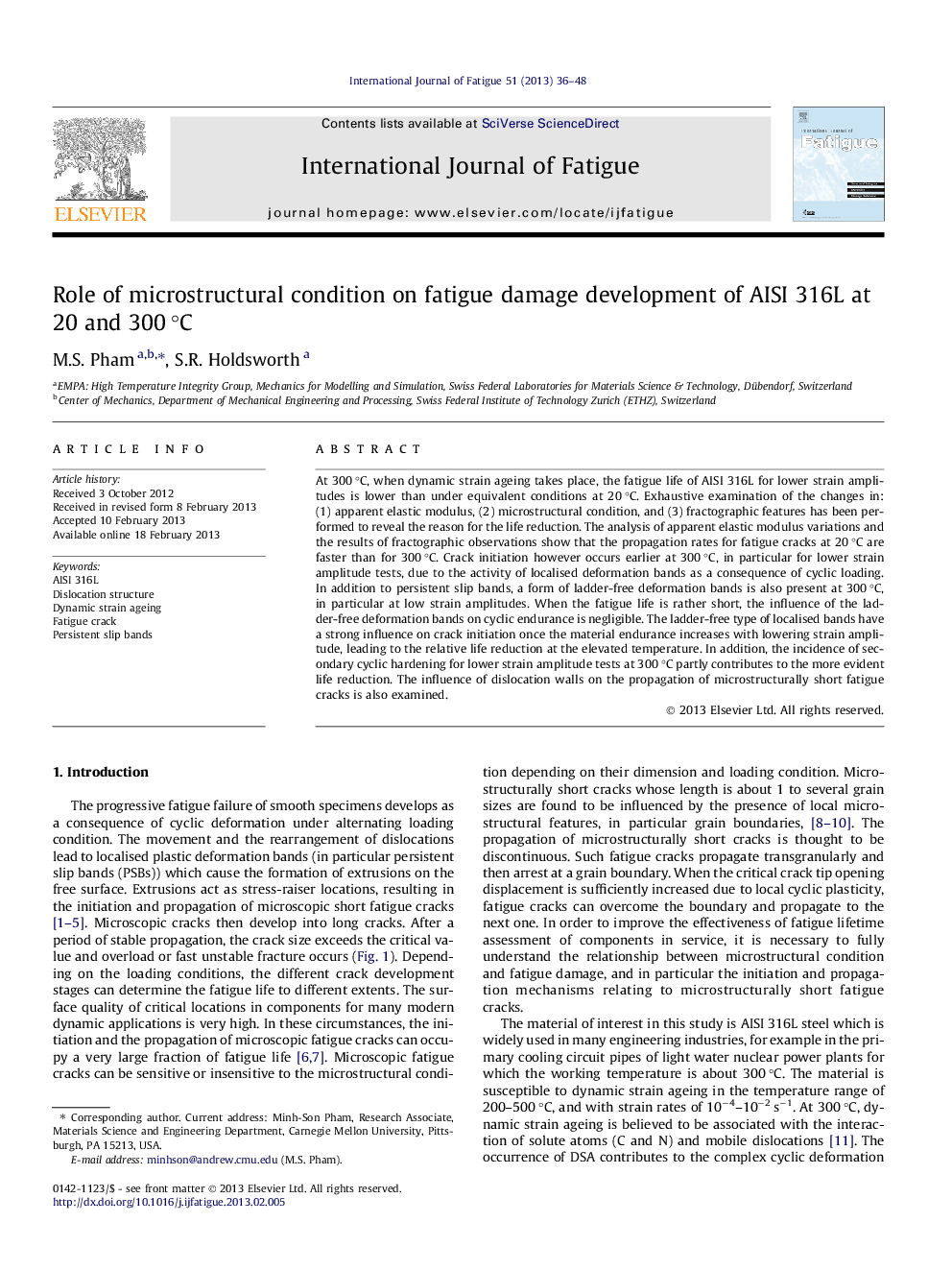| کد مقاله | کد نشریه | سال انتشار | مقاله انگلیسی | نسخه تمام متن |
|---|---|---|---|---|
| 777704 | 1463781 | 2013 | 13 صفحه PDF | دانلود رایگان |

At 300 °C, when dynamic strain ageing takes place, the fatigue life of AISI 316L for lower strain amplitudes is lower than under equivalent conditions at 20 °C. Exhaustive examination of the changes in: (1) apparent elastic modulus, (2) microstructural condition, and (3) fractographic features has been performed to reveal the reason for the life reduction. The analysis of apparent elastic modulus variations and the results of fractographic observations show that the propagation rates for fatigue cracks at 20 °C are faster than for 300 °C. Crack initiation however occurs earlier at 300 °C, in particular for lower strain amplitude tests, due to the activity of localised deformation bands as a consequence of cyclic loading. In addition to persistent slip bands, a form of ladder-free deformation bands is also present at 300 °C, in particular at low strain amplitudes. When the fatigue life is rather short, the influence of the ladder-free deformation bands on cyclic endurance is negligible. The ladder-free type of localised bands have a strong influence on crack initiation once the material endurance increases with lowering strain amplitude, leading to the relative life reduction at the elevated temperature. In addition, the incidence of secondary cyclic hardening for lower strain amplitude tests at 300 °C partly contributes to the more evident life reduction. The influence of dislocation walls on the propagation of microstructurally short fatigue cracks is also examined.
► The fatigue life reduction of AISI 316L at 300 °C relative to 20 °C is studied.
► Persistent slip band formation leads to crack initiation for short life conditions.
► Ladder-free slip bands increasingly develop with increasing cycle number at 300 °C.
► Ladder-free band formation is mainly responsible for the relative life reduction.
► Dislocation walls influence microstructurally short fatigue crack propagation.
Journal: International Journal of Fatigue - Volume 51, June 2013, Pages 36–48